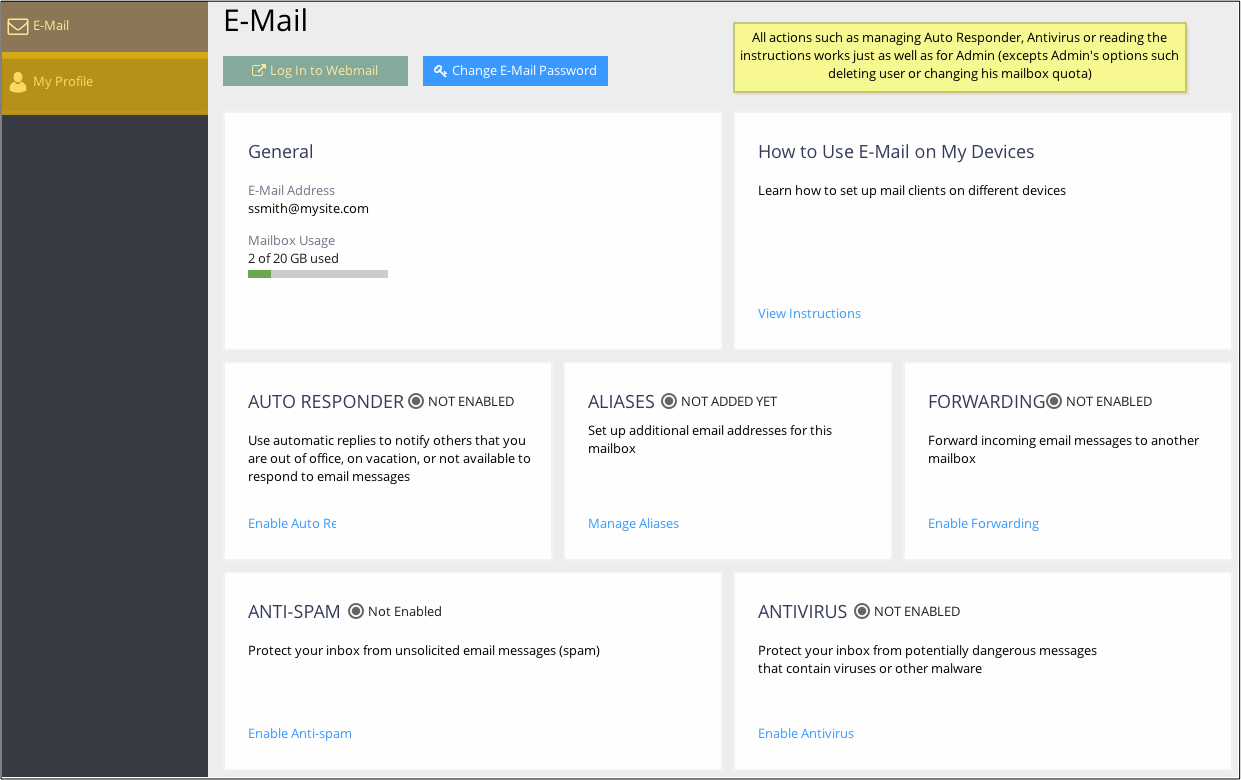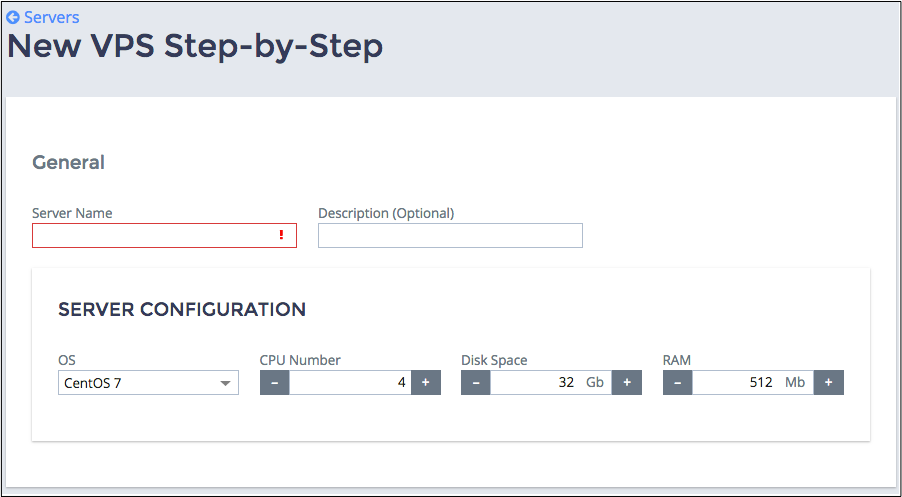Main Service View¶
An application integrator usually presents the main application service resources on the main service view that is shown first when a customer navigates to the application UI in the user panel. An application can provide its service for the whole company (Customer-Centric Service) or a service to be assigned personally to users (User-Centric Service).
Some applications can provide complex services, for example, a mail service bound to customer domains as the main service (Customer-Centric Service) and a sub-service assigned to users, for example, mailboxes (User-Centric Service).
Customer-Centric Service¶
In a simple case, when an application provides resources of the same type without any collateral resources, a customer needs to see the list of provisioned resources with a few parameters and a few actions, such as create and remove:
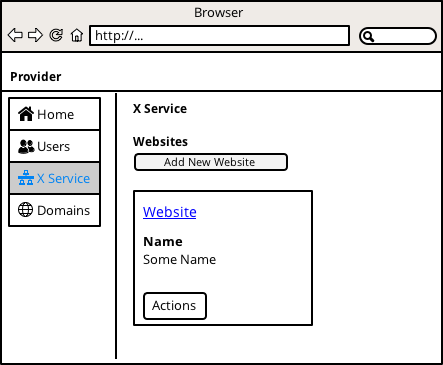
In a more complex case, an application allows a customer to provision main resources with auxiliary resources as allowed by the subscription:
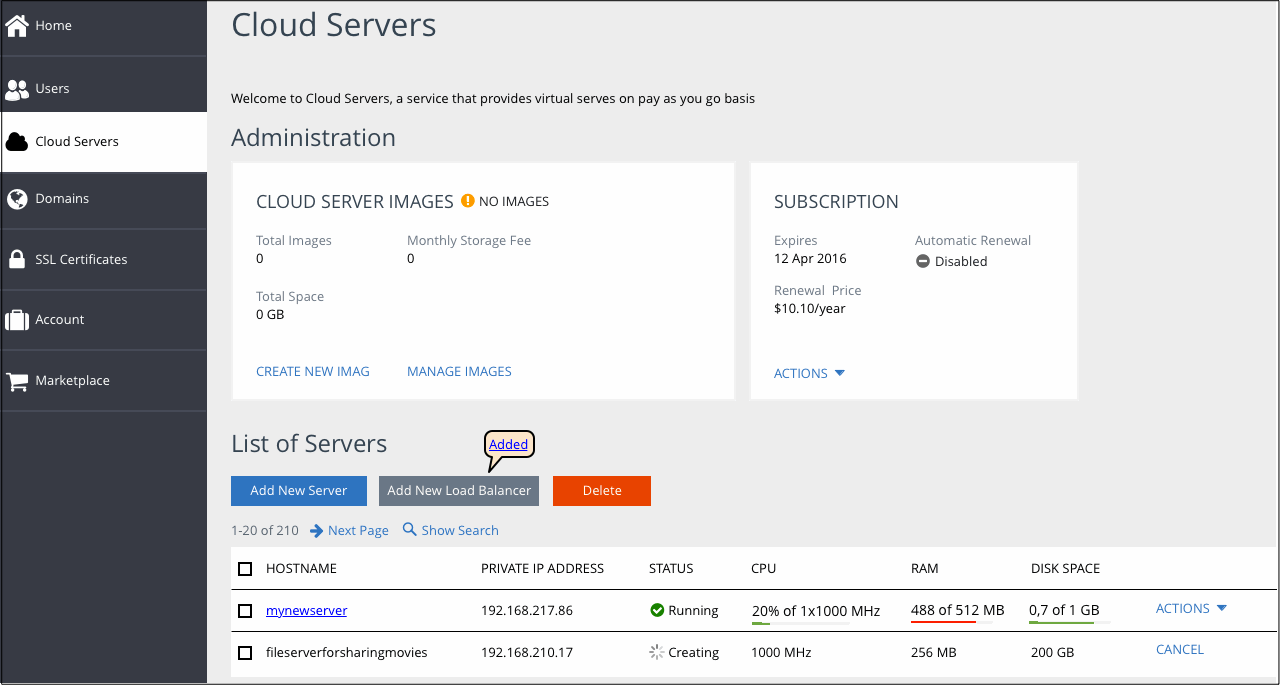
In any case, the customer needs to know the following typical information about the service (optionally, along with the subscription tile):
Name, for example, domain name or host name
Resource state, for example, running or stopped, active or unavailable, and so on
Resource configuration, for example, IP address and limits on the resource usage
Current resource usage
Available actions
If the list is empty, a short introductory instruction must be present on the page, for example, “Unfortunately, the service is unavailable for you. Please refer for details to your service provider”.
In a table, list items can be searched and sorted or ranked by some parameters. Usually, one of the fields in the table, for example, name, is a direct link to the resource configuration editor.
When designing the page, also take into account Resource List patterns.
User-Centric Service¶
When an application provides a service to be assigned personally to a user, there are two main service views:
In UX1, the main service view allows a customer to monitor the list of users who consume the service with respective resource usage.
In UX1, the main service view allows a service user to monitor and manage the assigned service.
Example of a simple main service view in UX1:
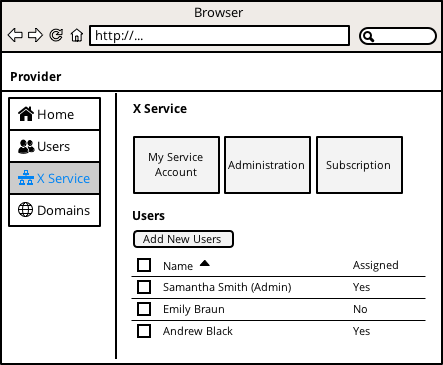
Example of a more complex main service view in UX1:
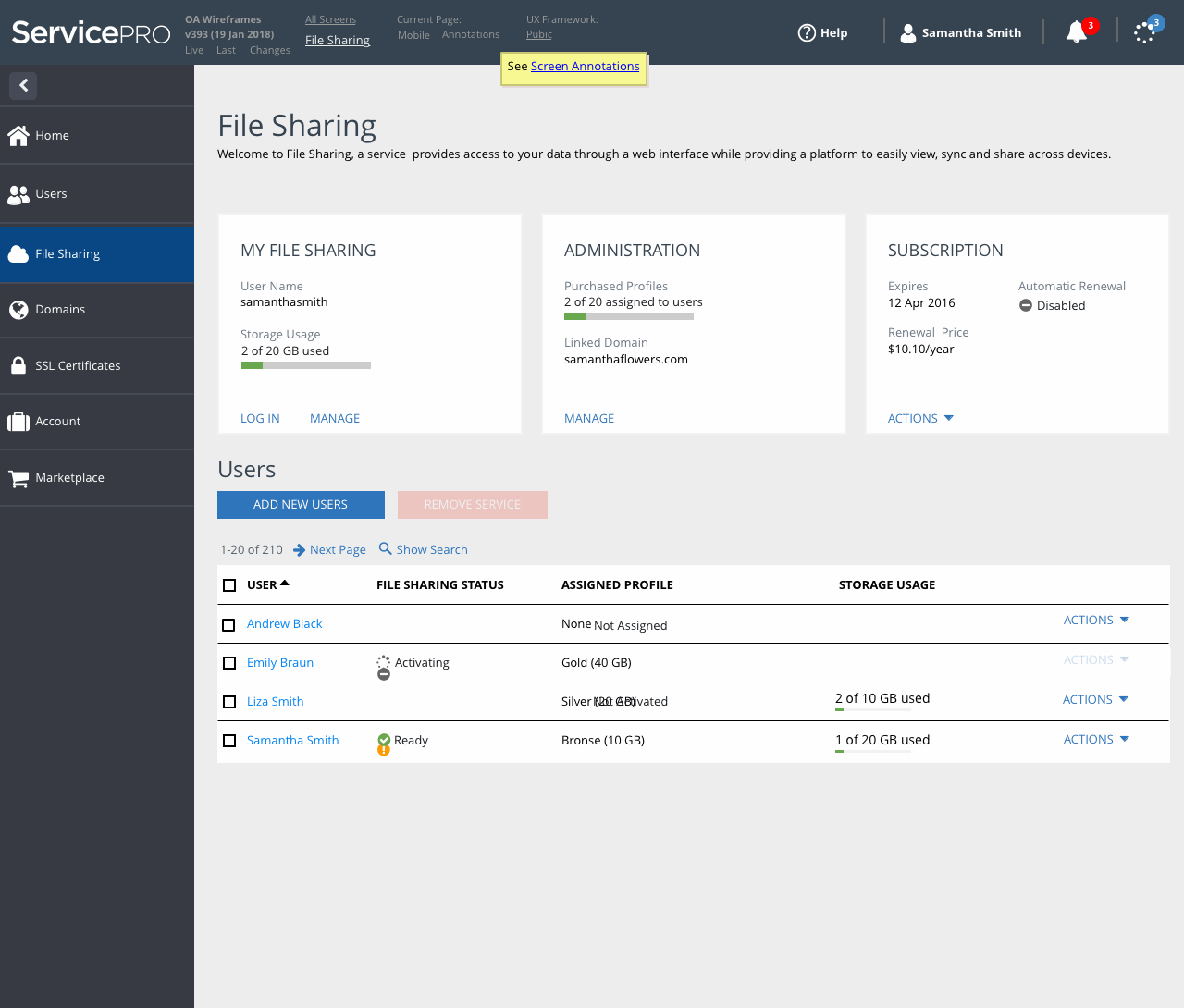
A user may meet with the service activation wizard that helps the user to set the initial values and then activate the assigned service:
